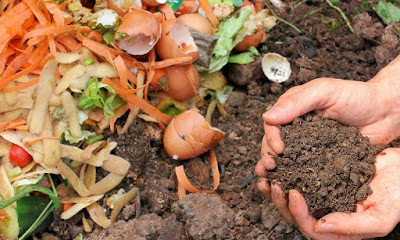How to Make Fertilizer from Kitchen Waste
You know you should take better care of your fertilizer, but what if you don’t have time? Or what if you just don’t think your soil is good enough to grow food? If you have a little bit of soil in your kitchen, you might be able to make your own fertilizer! The process is actually quite simple and you can make a better-quality product that costs less. All you need are some common kitchen ingredients and a few basic tools. Let’s get started!
What is a fertilizer?
A fertilizer is a substance that helps with the growth of plants. This is important because plants cannot produce the nutrients that we need on our own; they need vitamins, minerals, and water in order to grow. Most fertilizers come in granule form, but you can also find liquid fertilizers, which you can apply water-wise.
Most fertilizers are made from natural materials such as compost, gardening soil, animal manures, etc. You can also find ready-made fertilizers that contain chemicals. These can be harmful to plants, so it’s important to read the labels carefully.
There are many ways to make your own fertilizer. One way is to use kitchen scraps. You can either put them in a baggie and freeze them or use a slow cooker and have a slow-release fertilizer on hand. Scraps can also be used to make a mulch that can act as organic fertilizer for plants.
Other ways to make your own fertilizer are by using gardening soil and liquid fertilizers. You can also find ready-made fertilizers with chemicals. These can be harmful to plants, so it’s important to read the labels carefully.
What can go in your kitchen waste?
If you are making fertilizer from kitchen scraps, you can probably use more scraps than if you are using natural ingredients. For example, if you are using grass clippings, you can probably use about three times as much as if you were using manure. That said, there are some ingredients that are better left out when making your own fertilizer.
You don’t need to go overboard with the ingredients you put in your kitchen scraps, however. It is okay to use plant-friendly ingredients in the beginning, but you should always keep in mind that you are making a fertilizer. Second, avoid using additives and preservatives. These can be very harmful to your plants.
How to make fertilizer from kitchen waste
The first step in making fertilizer from kitchen waste is to get your hands on some scraps. Scraps come in all forms, including kitchen equipment and food. You can either get rid of these scraps by throwing them in the garbage or by composting them.
You can either get rid of these scraps by throwing them in the garbage or by composting them. Once you have the scraps, there are a few different ways to use them. One way to use scraps is to make fertilizer. For example, to make a foliar feed, simply place the scraps in a bag, add a little water, and place it in the middle of your garden.
You can also make soil amendments by simply placing the scraps in a pile, getting rid of the excess soil, and adding some organic matter such as compost, leaves, and other organic materials.
The finished fertilizer product
After you have the scraps, it’s time to put them to use. The first thing you need to do is to break down the scraps into smaller pieces. This is important because once you have the scraps broken down into smaller pieces, you can use them in a lot more ways.
You can either place the scraps in a bag and shake or place them in a large container and place a bowl on top to break down the scraps further. You can also use a large-scale shredder, which can reduce the waste by up to 90%.
After you have the scraps broken down, it’s time to mix it up. You can either use a large-scale or small-scale mixer to combine the scraps. A large-scale mixer should be able to hold about a ton of scraps at a time, while a small-scale mixer should be able to hold about a dozen scraps at a time.
The EZ-Scoop fertilizer lotion
The last thing you need to make your own fertilizer is EZ-Scoop. This is a 2-in-1 solution that can help with both nutrient and water retention. You can use it as a water conditioner, while also adding valued nutrients to the soil.
To make your own EZ-Scoop, simply add three parts botanical fertilizers to one part soluble fertilizer. You can either use a foliar feeder or a ground cover. Make sure to change the fertilizers according to the seasons, as well as your needs. For example, during the growing season, you can use a more fertility-based mix, while during the fall and winter, you can use a less fertility-based mix.
Disadvantages of homemade fertilizer
One major downside to making your own fertilizer is that you don’t get the same benefits that you would from buying commercial fertilizers. For example, fertilizers come in different forms and strengths, so it’s hard to know which type to use for your specific needs.
Another downside is that homemade fertilizers are typically less expensive than commercial fertilizers. If you are trying to save money and are not sure if fertilizing your soil will benefit your plants, homemade fertilizers are worth trying out.
Final Words
Making your own fertilizers is a great way to ensure that you are receiving the best product available for your soil. Not only will your soil be healthier, but you will also have the ability to make an informed decision when buying fertilizers instead of being sold a low-quality product by a commercial fertilizer company.

Post a Comment